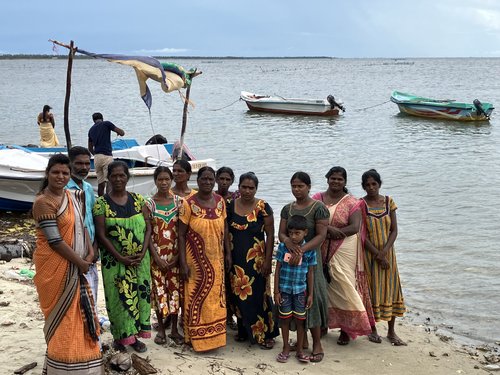Leprosy prevalence & climate induced migration in Sri Lanka
James Pender Programmes & Advocacy Officer ‑ Asia
My colleagues in the Leprosy Mission expressed surprise when I told them that this year is the first time in the history of global climate negotiations that health is officially on the agenda. A Climate and Health Declaration is to be delivered by health ministers and governments at the COP 28.
Considering the convention was drafted and opened for countries to sign up to in 1992, this has taken a very long while. I remember the time well as 1992 was also the year I began my degree in Environmental Studies at the University of Hertfordshire. At that time climate change was seen as an issue solely for environmentalists. There was uncertainty over whether climate change would even happen, let alone what the impacts would be. The ‘precautionary principle’ was much quoted.
Much has changed since then: there is now no doubt that climate change is caused by humans and our ever-growing impact on the planet. Instead of talking about the future impacts of climate change, we are now talking about how climate change is already affecting communities across the world from heatwaves and floods in the UK, to cyclones and melting glaciers further afield.
Another huge change is that we have realised is that climate change is not a specific issue you can put in a box, to be dealt with by environmentalists, but that it is a ‘risk multiplier’. This is a fancy way to say that climate change will impact on almost every aspect of life on earth that we can think of, and basically make most of the problems we face even worse!
So it is no surprise that health matters are gaining prominence in climate change negotiations as the 2023 report of the Lancet Countdown on health and climate change stated that: ‘The multiple and simultaneously rising risks of climate change are amplifying global health inequities and threatening the very foundations of human health.’
While many of the examples of the impact of climate change have focused on the straightforward examples of diseases such as malaria where average temperatures directly influence the range of the disease and its mosquito vector, I am discovering that the indirect impact of climate change on communities affected by leprosy is also very significant.

This came home to me recently while I was visiting one of the projects we support in northern Sri Lanka. We were visiting a community on the Island of Vellanai, in Jaffna District, and discovered that the in-shore fishing industry was struggling. The fishermen explaining that they were struggling to make an income and the fish were simply no longer in the waters to catch.
Dr Piratheeparajah a climatologist from the University of Jaffna explained to me that the north-east monsoon weather systems that formed over the Bay of Bengal, formerly generated winds that drove the plankton into the waters close to the coastline. Fish that fed on the plankton followed and were harvested by the fishermen. However, the monsoons and their associated winds are weakening. This is resulting in less plankton offshore and a reduction in prey for fish, and is one of the major factors in reducing catches.
The reduced incomes as the fishing industry crashed, led eight of the women from this fishing community to travel to the capital Colombo in 2013-14 to earn money to prevent their families sliding into poverty, working in a garment factory. However, while in Colombo it appears that four of these women contracted leprosy and took it back to the island where the Government believed leprosy had been eliminated some years earlier.
Two women were diagnosed in 2015 and just before my visit in October 2023 further women with leprosy were detected with very high levels of the bacteria in their body indicating the delay in their diagnosis and making them infectious; coming to a total of twelve women and two male new cases of leprosy on Vellanai.
Who would have thought there was a link between monsoon winds, climate, plankton and leprosy, but this is exactly why climate change is such an insidious threat to health and why the Leprosy Mission is calling on the Governments at COP 28 to take serious action to address climate change. It impacts increasingly and disproportionately fall on the most vulnerable such as communities affected by leprosy.